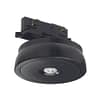Blog
The Principles of Biophilic Design
Transforming Commercial Spaces with Nature
In the fast-paced world of commercial interior design and architecture, there’s a growing recognition of the profound impact our surroundings have on our well-being and productivity. Biophilic design, a concept gaining increasing traction, seeks to bridge the gap between urban environments and the natural world, enhancing human connection to nature within built spaces. For commercial interior designers and architects, understanding the principles of biophilic design can unlock a realm of possibilities for creating healthier, more inspiring environments for work, leisure, and everything in between.
Principle 1: Nature in the Space
At the core of biophilic design lies the incorporation of natural elements into the built environment. This can include introducing plants, natural materials such as wood and stone, as well as views of nature through windows or strategically placed greenery. For commercial spaces, integrating green walls, indoor gardens, or even water features can bring a refreshing touch of the outdoors indoors, fostering a sense of tranquillity and connection.
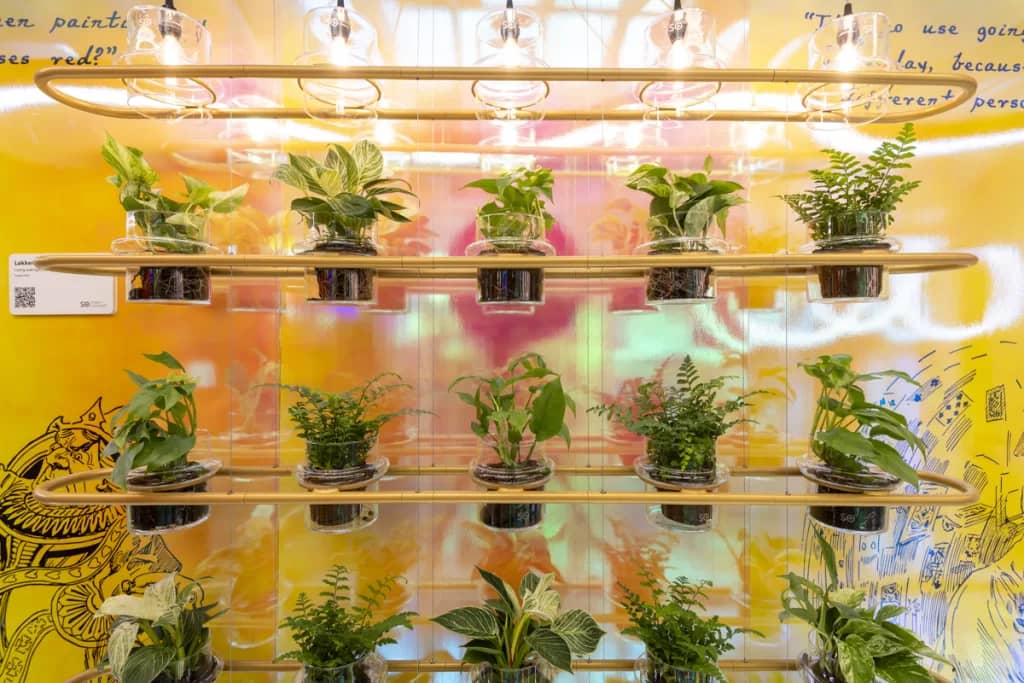
Principle 2: Natural Light and Views
Natural light is not just a practical consideration but a fundamental aspect of biophilic design. Maximising access to daylight and views of the outdoors not only reduces reliance on artificial lighting but also enhances occupants’ mood, energy levels, and overall well-being. Architects and designers can achieve this by strategically positioning windows, skylights, and reflective surfaces to optimise daylight penetration while framing views of nature.
Principle 3: Biomimicry
Biomimicry involves drawing inspiration from nature’s patterns, forms, and processes to inform design solutions. From mimicking the fractal patterns found in leaves to incorporating organic shapes reminiscent of natural landscapes, biomimetic design elements can evoke a sense of harmony and cohesion with the natural world. Integrating biomorphic shapes into furniture, architectural features, and decorative elements can create a visually stimulating and psychologically restorative environment.
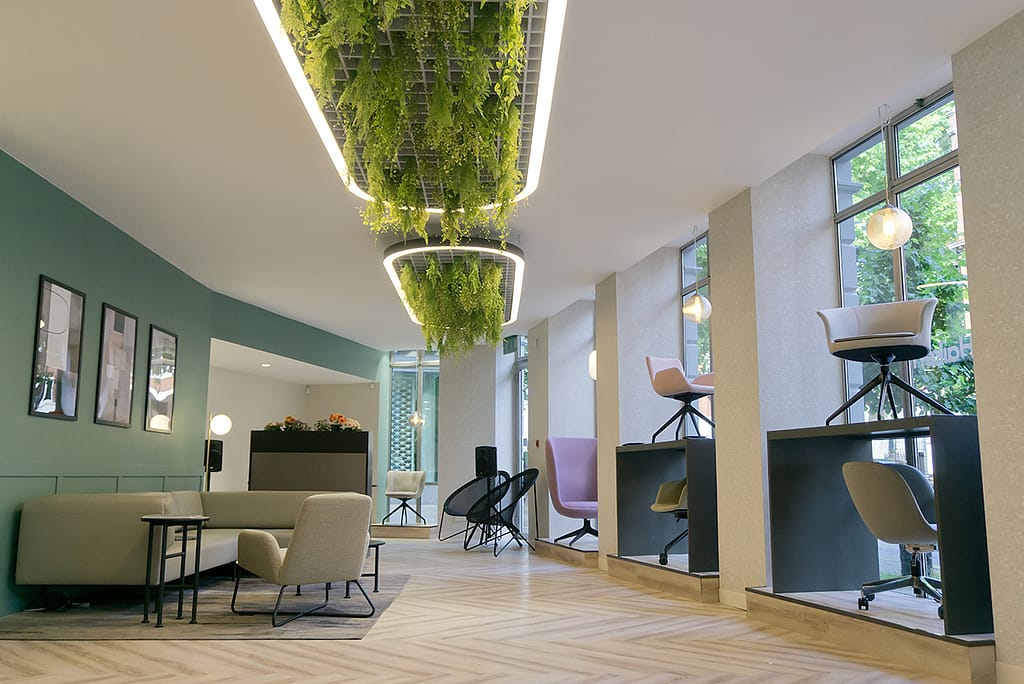
Principle 4: Sensory Engagement
Biophilic design aims to engage all the senses, creating multisensory experiences that resonate with occupants on a deeper level. Incorporating elements such as natural textures, soothing sounds of water, and subtle scents of plants can evoke a sense of calm and connection. For commercial spaces, integrating sensory-rich environments, such as green roofs, tactile surfaces, and natural ventilation systems, can enhance occupants’ cognitive function, creativity, and emotional well-being.
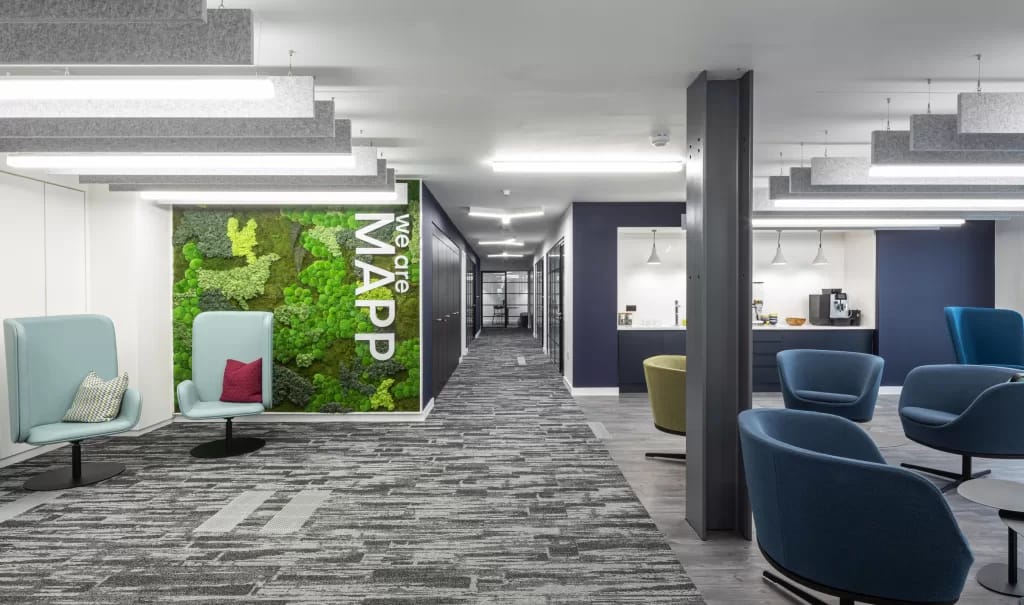
Principle 5: Cultural and Ecological Connection
Beyond aesthetics and functionality, biophilic design seeks to cultivate a deeper connection to local ecosystems and cultural heritage. Incorporating regionally appropriate flora, indigenous materials, and traditional design motifs can celebrate the unique identity of a place while promoting ecological sustainability. By honouring the natural and cultural context of a site, architects and designers can create spaces that resonate with occupants on a personal and meaningful level.
Principle 6: Biophilic Urbanism
Biophilic design extends beyond individual buildings to encompass entire urban landscapes, advocating for the integration of green spaces, wildlife habitats, and pedestrian-friendly infrastructure into city planning. By prioritising human-scale design, walkability, and access to nature, biophilic urbanism aims to create healthier, more resilient cities that nurture both people and the planet. For commercial architects and designers, this holistic approach presents opportunities to shape urban environments that prioritise human well-being and ecological sustainability.
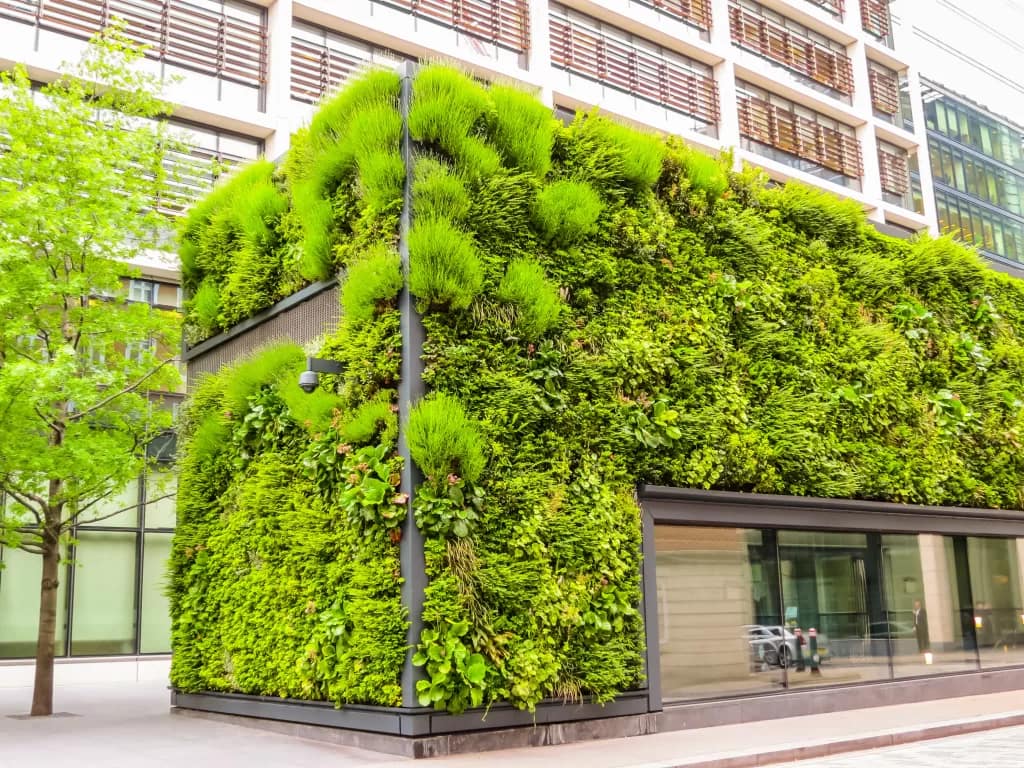
Biophilic design offers a compelling framework for reimagining commercial spaces as vibrant, life-affirming environments that inspire creativity, foster well-being, and promote sustainability. By embracing the principles of biophilic design, architects and designers can create spaces that not only enhance the bottom line but also enrich the lives of those who inhabit them, forging a deeper connection between people, nature, and the built environment.
In the pursuit of integrating biophilic design principles into commercial spaces, innovative solutions are key. Synergy Creativ stands at the forefront, offering cutting-edge biophilic lighting solutions that seamlessly blend functionality with nature-inspired aesthetics. Their range includes innovative lighting fixtures that mimic natural sunlight patterns, as well as pioneering technologies such as living plant systems integrated directly into lighting installations. With Synergy Creativ’s expertise, architects and designers can elevate their projects to new heights, harnessing the power of light and living elements to create truly transformative environments that prioritise human well-being and ecological harmony.



